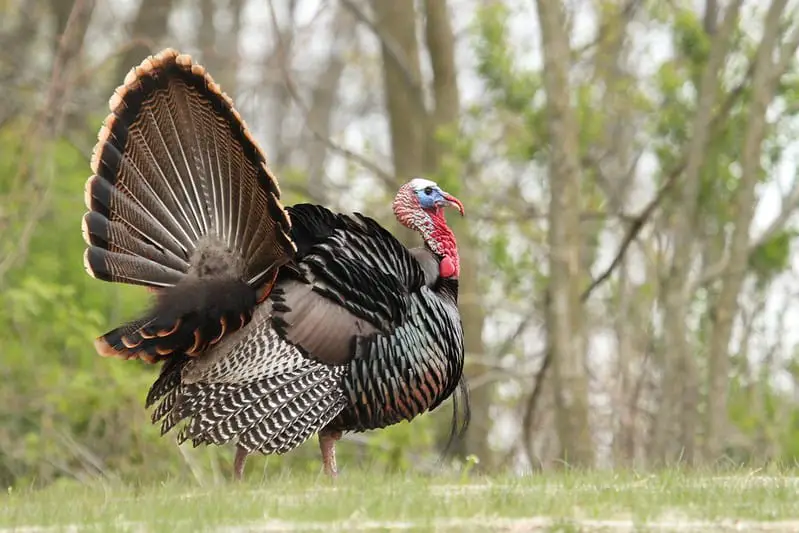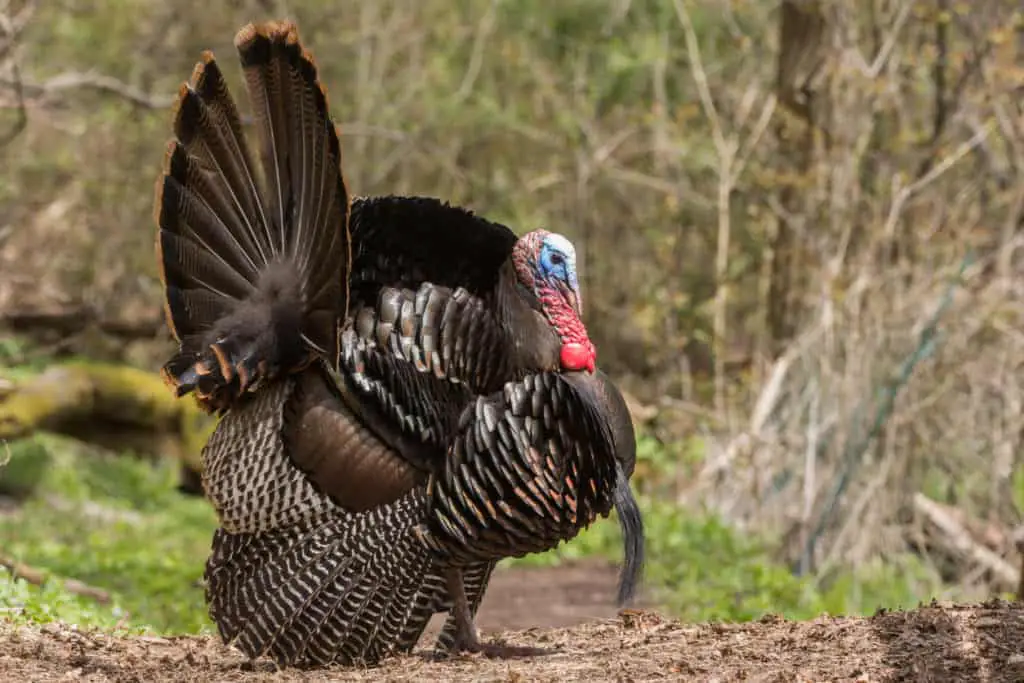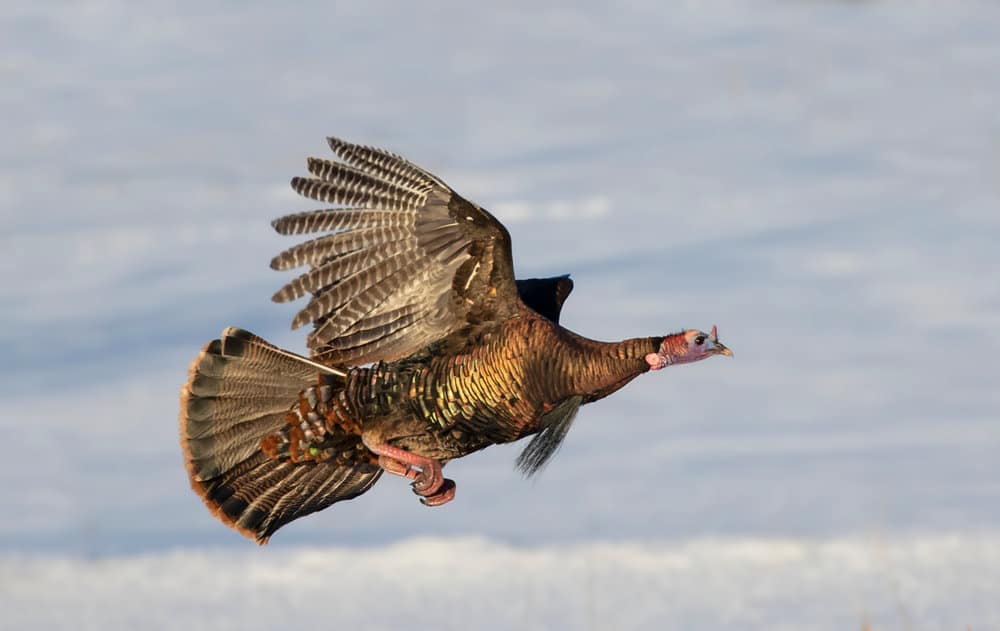There is only one way to find a wounded turkey, have a plan and the tools you’ll need before you enter the field. There is an old police saying, ”If it isn’t on your belt, you’ll leave it in the patrol car when you need it.”
The same applies to turkey hunters. If you do not have a plan and the right tools needed to track an injured turkey, you’ll have to go home to get them. Even if the drive is short, you’ll be tempted to tell yourself you had a clean miss and never make an effort to do the right thing.

To find a wounded turkey, first, note the turkey’s reaction to the shot; knocked down, leaped into the air, or ducked. Make a note of the compass heading the bird fled in and then examine the shooting location for feathers and blood signs. Lastly, begin your track, flagging the trail as you go.
Related: What is the best time of day to turkey hunt?
How to find a wounded turkey right now.
Your first, best clue as to how well you aimed your shot is the instant reaction of the turkey. If you knocked it down, it won’t travel far. But what if the turkey leaped into the air? Could you have dusted his bottom or missed well below him? And if the turkey suddenly ducked down, did you graze his back or shoot well over him?
As the turkey makes his escape, note the compass heading he takes. Do not use the sun as a guide. If your search takes too long, the sun’s placement will slowly drag you off your track. Instead, use a compass or your phone.
Keep an eye on him until he disappears, then remain still and quiet and listen as he makes his escape. If your turkey runs off or flies away, it will make an unmistakable noise if it crashes. Note where that sounds comes from and head straight to it—that bird has succumbed to his wounds.
Did you even hit the bird? If you did, how badly is he wounded? The answers to these questions will most likely be found at the scene of the shooting. Feathers and blood equal a hit—feathers only, a possible hit at best.
If you shot at a bird and aimed for the same spot as the target above, a high shot that didn’t connect with the vertebrae won’t leave much blood behind. If you find feathers, what body part did they come from?
Related: Turkey nest facts.

Tracking a wounded turkey.
When you start looking for a wounded turkey, it really helps to know where you have been and maybe a few technological advantages. If you come prepared, a blood light tracker or thermal game scanner is better than the eyes of four friends.
Unlike tracking a wounded deer, do not wait to pursue a wounded turkey. Like following a wounded coyote, the more time you waste, the further that bird will get ahead of you. And no animal can find a hiding spot as well as a wounded turkey.
If you are searching using only the naked eye, your task is difficult. The same turkey feathers that confirmed your shot hit can keep any blood from ever reaching the ground. The best thing you can do is be willing to get down on your hands and knees and keep flagging every feather or drop of blood you find.
Where do wounded turkeys go?
A wounded turkey will seek the thickest cover it can find. It may attempt to escape by flying away, but a turkey is built to run away from predators and rarely can maintain flight for longer than 100 yards. After a few seconds of flapping, the turkey will tire and glide for as long as possible. If you saw it fly away, note where the wings stopped flapping and begin your foot search there.
Related: Is it a jake or a tom turkey?

A wounded turkey’s goal is to reach a place that will hide it from a predator. Unfortunately for you, the best places to hide are the ones you know will take forever to sift through. You’ll need to thoroughly search any tall grassy areas, under and around fallen logs, dense brushes, or fern-covered wood lines.
You have a decision to make if you reach a point where you no longer find any blood or feathers. If you believe there is enough evidence to say for sure you hit the turkey, you must begin an exhaustive visual search.
Pick a spot at least 200 yards ahead, in the direction the turkey fled. Then spend the time required to check every inch of space between you and that point. This is a percentage game. Most wounded turkeys are found within a few hundred yards of where they were first wounded. If your shot connected, your bird is somewhere within that range, dead and tucked into thick cover.
Trying to find a wounded turkey is one of the most challenging hunting tasks you will ever undertake. Safety is paramount. It would be best if you kept your weapon handy in case you bump your bird and need to shoot again. Finding it will make it feel like Christmas, but take a bit of credit for being willing to search as hard and as long as possible nonetheless. Good luck!

